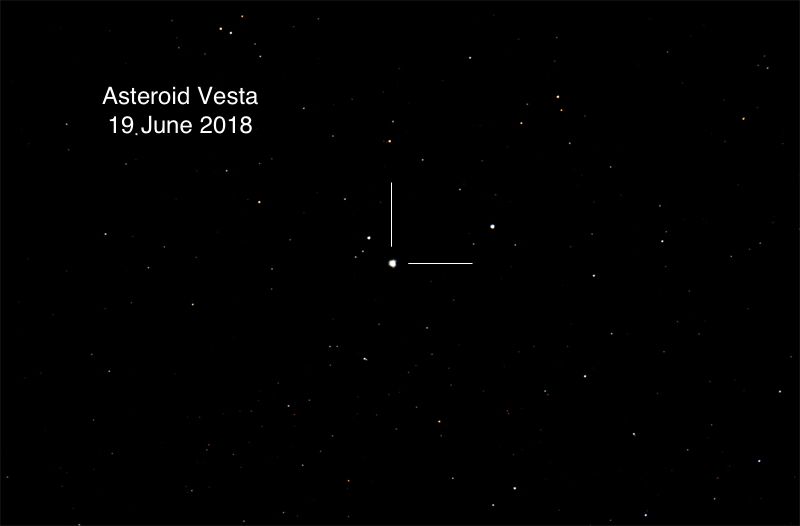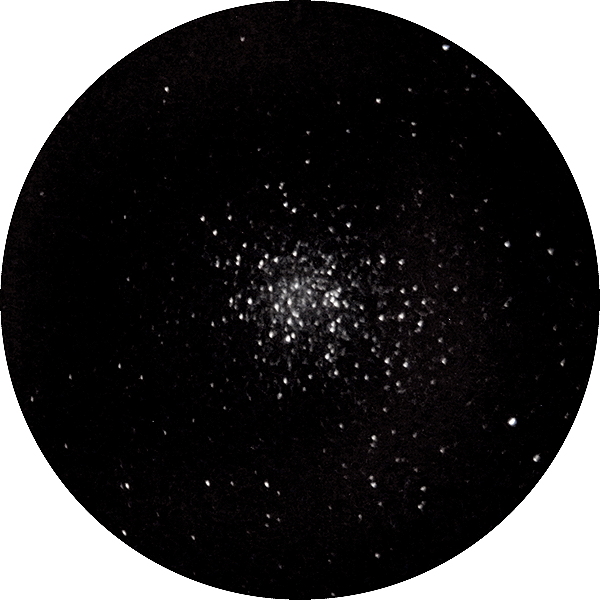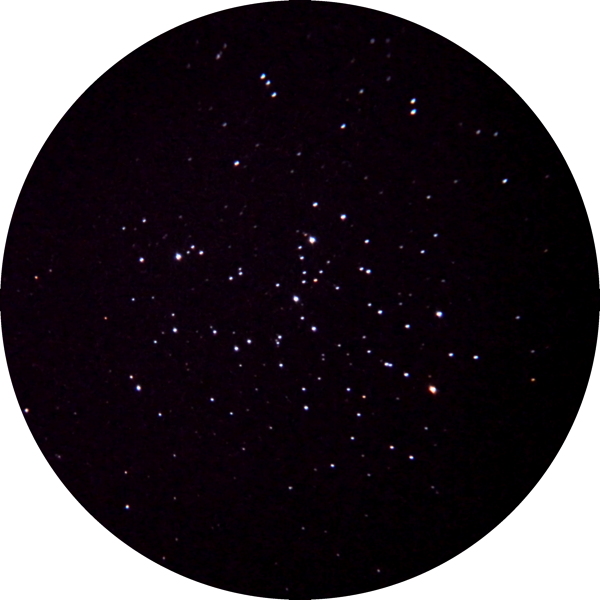iPhone Planets, Moon, Messier Catalog;
D850 DSLR Asteroid Vesta
Posted: 20 June 2018
|
Open: Tuesday, 19 June 2018, 1921 MST Temperature: 82°F |
Session: 1253 Conditions: Clear |
Equipment Used:
12" f/8 LX600 w/StarLock
2" 24mm UWA eyepiece
2" 9mm 100° eyepiece
1.25" 15mm eyepiece
2" 30mm eyepiece
Camera:
iPhone 8 Plus
D850 DSLR
1928 MST: LX600 ON, StarLock OFF, High Precision OFF.
Viewed Venus, 102X and 271X. Took this handheld iPhone 8 Plus afocal 271X photo using NightCap Camera (ISO 22, 1/350sec):

1937 MST: sunset.
Viewed Moon, 102X. Took this handheld iPhone afocal 102X photo using NightCap Camera (ISO 20, 1/560sec):

Switched to the 2" 9mm 100° eyepiece. Took this handheld iPhone afocal 271X photo of the craters Theophilus, Cyrillus, and Catharina using the Camera app:

And Theophilus, Cyrillus, and Catharina with the iPhone 8 Plus 2X camera handheld using NightCap Camera (ISO 125, 1/60sec):

Viewed Jupiter, 271X. Four moons were visible. Mounted the iPhone on the 2" 9mm eyepiece using the Levenhuk afocal adapter. Took this single frame afocal 271X image of Jupiter with NightCap (ISO 22, 1/45sec):

This is a stack of 916 video frames, afocal 271X, from NightCap Camera (ISO 22, 1/35sec):

2006 MST: returned to the Moon for some lunar observing, 271X.
2015 MST: Kissing Bug #1 was seen, but was too high on the dome to reach.
Slewed to M64 (Black Eye Galaxy), which I hoped to image for my Extragalactic Supernova Project if the Moon did not interfere. Began preparing the D850 DSLR for imaging.
2025 MST: Kissing Bugs #2 and #3 were terminated.
2053 MST: M64 was now faintly visible, 102X.
2120 MST: mounted the D850 DSLR at prime focus of the 12" telescope. SYNCed and focused on the star Denebola.
2127 MST: High Precision ON, StarLock ON.
Tried imaging M64 but apparently the Moon was too close and too bright to it. The StarLock could not maintain a good autoguiding lock. Will have to image M64 on a future session.
2143 MST: StarLock OFF, High Precision OFF.
2150 MST: slewed to Antares, SYNCed, and checked focus (OK). GC Wi-Fi ON. Used SkySafari 6 Pro to GOTO asteroid 4 Vesta, which was at opposition.
2156 MST: Wi-Fi OFF, StarLock ON.
2200-2230 MST: did three StarLock autoguided exposures of Vesta (30 sec, ISO 3200, White Balance 4550K) separated by 15 minutes.
Asteroid 4 Vesta

Asteroid 4 Vesta (animated)

2231 MST: StarLock OFF.
Removed camera. Viewed Vesta, 102X.
I then checked several Messier Catalog objects that I wanted to image with the iPhone 8 Plus. All were in view. Viewed the globular clusters M22, M28, M54, M60, and M70, 102X. Viewed the open star clusters M6 and M7, 102X. I switched to the 15mm eyepiece and mounted the iPhone on the eyepiece.
2248 MST: Kissing Bug #4 terminated.
2254 MST: StarLock ON.
Took these StarLock autoguided, afocal 163X, iPhone photos with NightCap Camera (ISO 8448, 1/3sec, 1 minute exposures):
M22 (globular cluster)

M28 (globular cluster)

M54 (globular cluster)

M69 (globular cluster)

I had also imaged M70 (globular cluster) but that image was not good. Will retake on a future session.
Switched to the 30mm eyepiece for these StarLock autoguided, afocal 81X, iPhone photos with NightCap Camera (ISO 8448, 1/3sec, 1 minute exposures):
M6 (open cluster)

M7 (open cluster)

M8 (Lagoon Nebula)

M16 (Eagle Nebula)

M17 (Swan Nebula)

M20 (Trifid Nebula)

2346 MST: StarLock OFF.
Viewed M20 (Trifid Nebula), M17 (Swan Nebula), M16 (Eagle Nebula), and M8 (Lagoon Nebula), 102X.
2356 MST: viewed Mars, low in the southeast, 102X. Not a very good view but a large surface dark area was visible.
The last object viewed this session was Saturn, 102X.
2359 MST: LX600 OFF.
I then took this handheld D850 DSLR photo of the Sagittarius area of the Milky Way, Saturn, and M7 (f/4.5, 1 sec, ISO 12800, WB 4550K, FL 70mm):

Mouseover or tap on image for labels
|
Close: Wednesday, 20 June 2018, 0020 MST Temperature: 70°F |
Session Length: 4h 59m Conditions: Clear |
Comments are welcome using Email. Twitter users can use the button below to tweet this report to their followers. Thanks.
Cassiopeia Observatory Home Page
Copyright ©2018 Michael L. Weasner / mweasner@me.com
URL = http://www.weasner.com/co/Reports/2018/06/20/index.html
